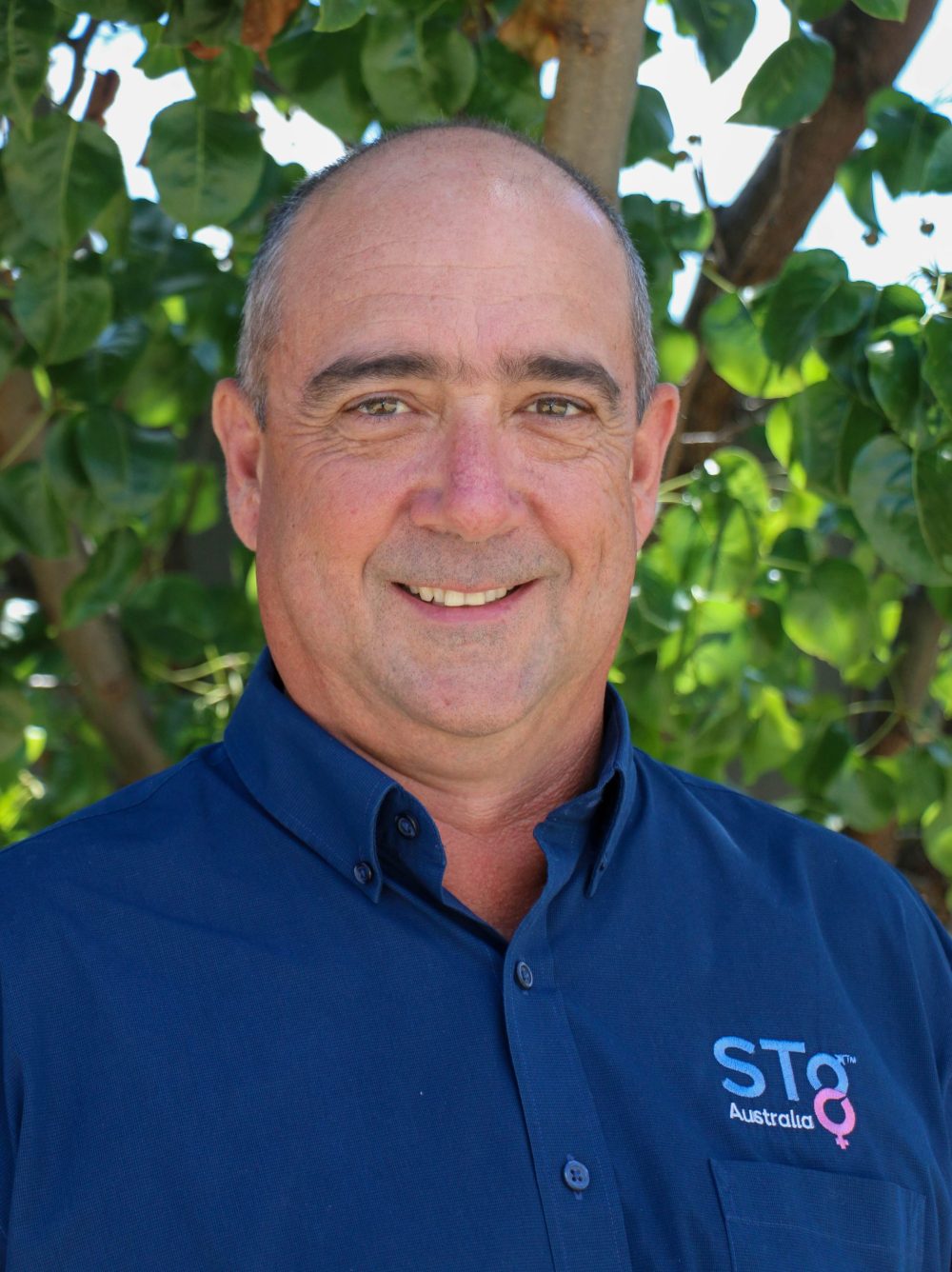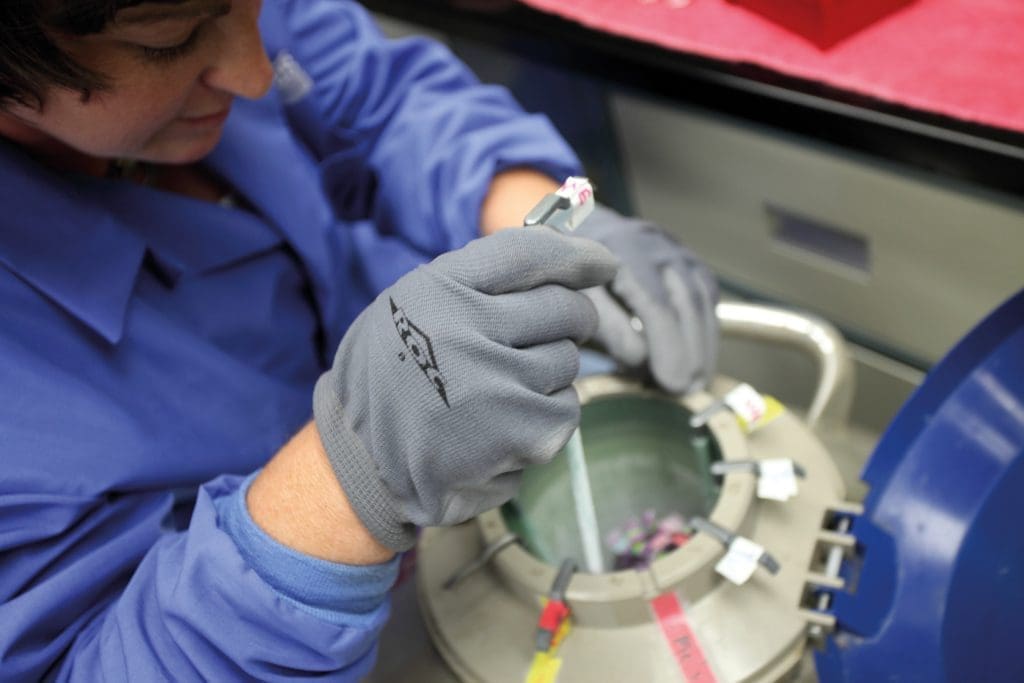As semen sexing technology rapidly gains traction, commercial beef producers are increasingly turning to the process as a drought recovery tool.
ST Genetics Beef Sales Manager Nigel Semmens said the technology gave commercial herds the option of using sexed female semen to breed replacement females or male sexed semen to boost their steer numbers.

Nigel Semmens, ST Genetics beef sales manager.
“Many commercial cattle producers are already implementing some sort of artificial insemination program and the decision to use sexed semen is up to the individual,” Mr Semmens said.
“Cost-wise it is not much different from conventional semen, but it gives the option of breeding more females or males, as the need arises.”
Mr Semmens was a guest speaker at a seminar organised for commercial and seedstock producers by Angus NSW in Wagga Wagga on March 3.
Angus NSW Chairman Matt Macri said the state body was committed to engaging NSW members in the expansion of knowledge in the Angus breed within Australia.
“We aim to continue to bring the latest information on genetic selection tools and research for beef cattle producers, with the objective of breeding superior cows to retain within herd,” Mr Macri said.
Nigel Semmens said beef producers elected to use female semen to rebuild herd numbers when recovering from a drought.
“We saw that especially coming out of the drought we had a lot of customers who bred more females as replacements while maintaining the existing cow herd base,” he said.
“We had other customers with a reduced cow base after the drought who wanted to produce more bulls going forward, so they implemented strategies of using male semen.
“Some seedstock producers AI’d any females coming into heat with male semen and the same bull with conventional semen was used on the balance to maintain a healthy conception rate with a bias to more male progeny for selecting young sires to sell.”
Mr Semmens said commercial producers used sexed semen to produce more steers.
“Some are genomically testing to determine the heifer group to breed replacements from and male semen is used over the balance of the heifers to produce more steers.
“There is now high purity sexed semen products with 96-97 percent accuracy.
 This gives producers the opportunity of how they want to use the technology as a tool in their breeding program.”
This gives producers the opportunity of how they want to use the technology as a tool in their breeding program.”
A product with 75pc accuracy called Super Conventional was recently released in the US, with an average conception rate of 58pc using Fixed Time AI programs.
Rather than focusing on individual sires, semen bundles (three bulls per straw) are now tailored to suit maternal, branded beef, feed efficiency, growth and carcase traits.
The maternal package from ST Genetics uses sexed female semen and is designed for heifers with the focus on calving ease and replacement female merit while the feed efficiency bundle of male sexed semen is for use in mature cows to maximise feed conversion efficiencies.
The Branded Beef is a male blend designed for mature cows to produce progeny targeting exceptional weaning, yearling and carcase weights and marbling.
For commercial crossbreeding programs, a Charolais specific male blend for mature cows gives growth, efficiency and carcase weight, while a SimAngus male blend focuses on calving ease, weaning, yearling and carcase weights.
ST Genetics business development manager Paul Douglas conceded conception rates up until 2015 had been average, but in the intervening years there has been a quantum leap in conception rate by 8pc using 2 million cells a straw.
“In the late 1990s and early 2000s there was some not so good experiences with sex-sorted semen, but it was really about 2009 when we got into the single cell level, the technology had the chance to develop a more robust footprint,” Mr Douglas said.
“It has now been eight years since we could present a product effective and efficient to use in the cattle reproduction industry.
“There has been constant development and improvement in the sex sorting technology.”
Sex sorting technology first appeared in the US beef and dairy industry in 1997 but it wasn’t until 2009 when technology enhancements increased the process efficiency and comparability with the conventional sperm conception rate.
A product was launched in 2015 with 2.1 million cells per straw and 90pc purity, and was followed in 2017 with four million cells per straw. In 2020, 95pc or greater purity was reached.
The conception rate gain in 2023 is now 14pc above the first tranche of sorting technology used in 2005-2015.
“This process of improvement is still occurring today and within the next three to six months there is a planned improvement again with the objective of lifting the conception rate of sexed semen,” Mr Douglas said.
“In the UK, the mandated protection of the bobby calves means there is a focus on sexed semen and in the UK AI businesses, there would be lucky to be 5pc conventional semen processed. It is all sexed for the domestic AI industries.
“In the US, there is no export market for excess dairy heifers so they need to protect heifer replacement numbers – an extra heifer is a cost to their system and this has turned the AI industry on its head as 40 per cent of genetic business in volume of straws is dairy.
“Those calves end up in feedlots and it is male beef that’s driving the system, and that has been a rapid increase in the last 12 to 14 months.”
